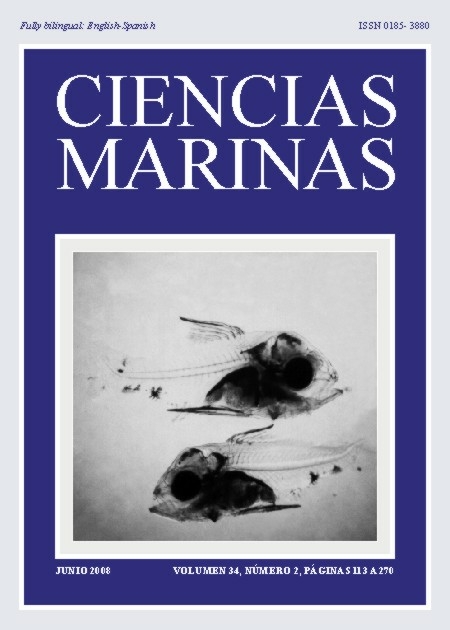Spatiotemporal distribution of Lekanesphaera species in relation to estuarine gradients within a temperate European estuary (SW Spain) with regulated freshwater inflow
Main Article Content
Abstract
Field surveys of three coexisting Lekanesphaera species from a temperate estuary were used to test the hypothesis that their abundance and distribution within this ecosystem were limited mainly by environmental conditions (water temperature, salinity, and turbidity). Monthly samples were collected during each new moon (May 1998 to October 2002) in the last 32 km of the Guadalquivir Estuary (SW Spain). Lekanesphaera hoestlandti was more abundant in the outer estuary from late summer to early autumn, but only when estuarine mean salinity was higher than 15; L. rugicauda showed a clear seasonal pattern, with maximum densities coinciding with the period of increasing temperatures (spring and early summer); and the density of L. hookeri was very low, except in situations of heavy rainfall and/or freshwater inflow, suggesting than the main river course is not its usual habitat. Spatial, salinity-related, and turbidity-related distributions of the three populations indicated that L. hoestlandti is clearly segregated from the other two species, the former inhabiting the more saline and less turbid mass of water of the outer estuary. Furthermore, the high positive effect of salinity on the density of L. hoestlandti (salinity explained 59.4% of the temporal density variance) and its much more restricted spatial and salinity-related distributions indicated that salinity could be primarily determining its population. In contrast, the field distribution of L. rugicauda was biased towards lower salinity waters at least when L. hoestlandti occurred in high densities. According to the field distributions, we hypothesize that the estuarine distribution of the less euryhaline species, such as L. hoestlandti, is controlled mainly by salinity, whereas the distribution of the more euryhaline species, such as L. rugicauda, could be motivated more by competition (food/habitat) avoidance. As previously observed for mysid species, the composition and distribution of Sphaeromatidae species in the Guadalquivir Estuary seem to fit the African rather than the European estuarine pattern.
Downloads
Article Details
This is an open access article distributed under a Creative Commons Attribution 4.0 License, which allows you to share and adapt the work, as long as you give appropriate credit to the original author(s) and the source, provide a link to the Creative Commons license, and indicate if changes were made. Figures, tables and other elements in the article are included in the article’s CC BY 4.0 license, unless otherwise indicated. The journal title is protected by copyrights and not subject to this license. Full license deed can be viewed here.

